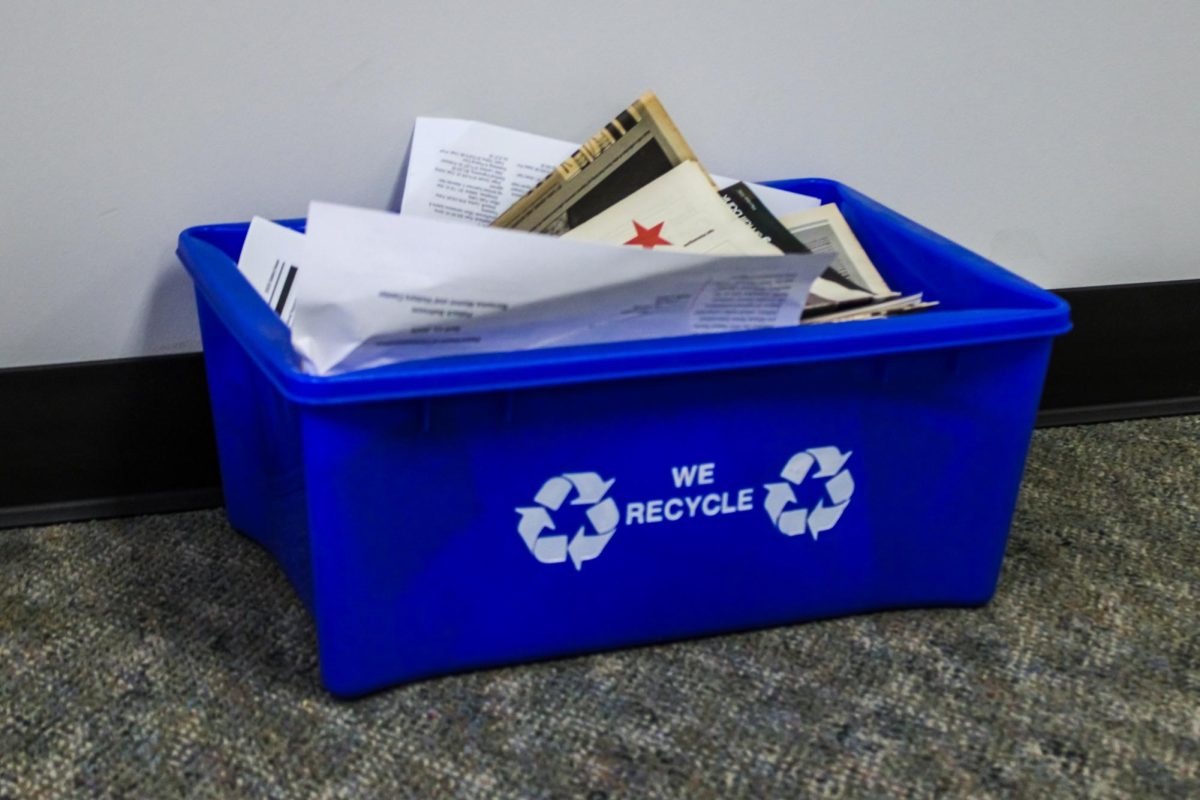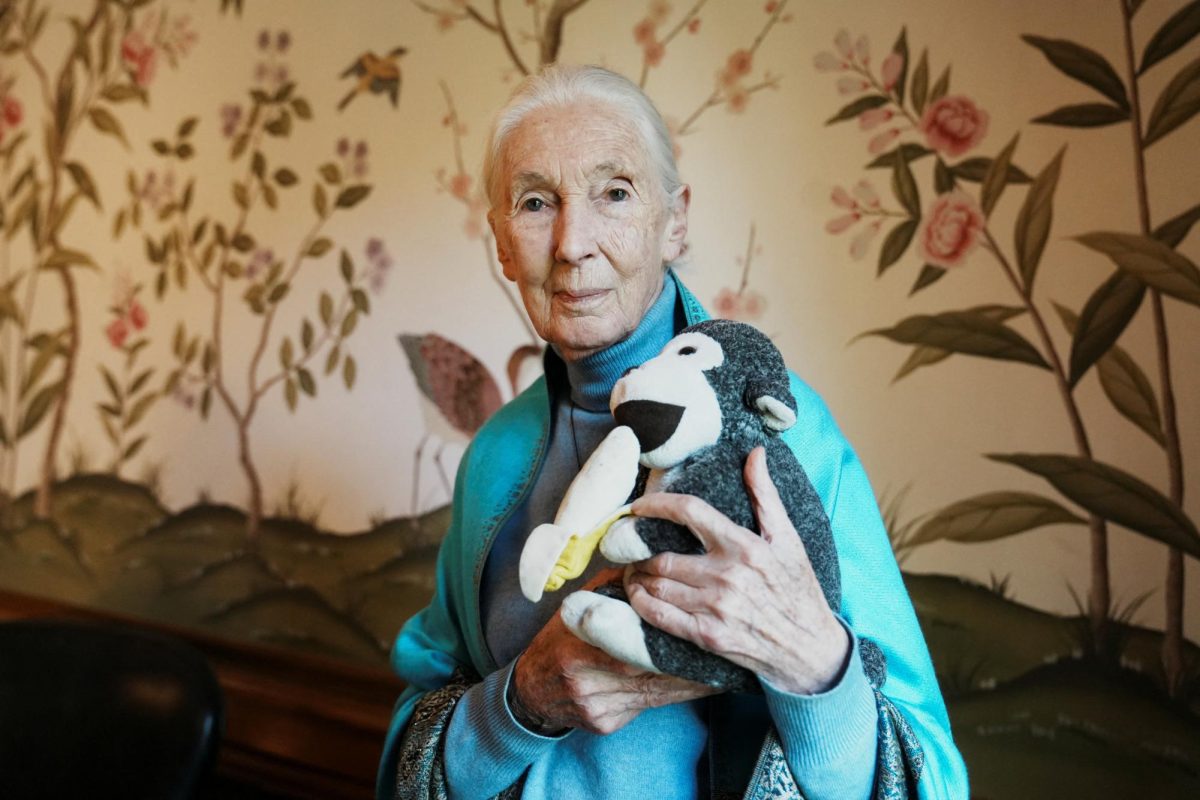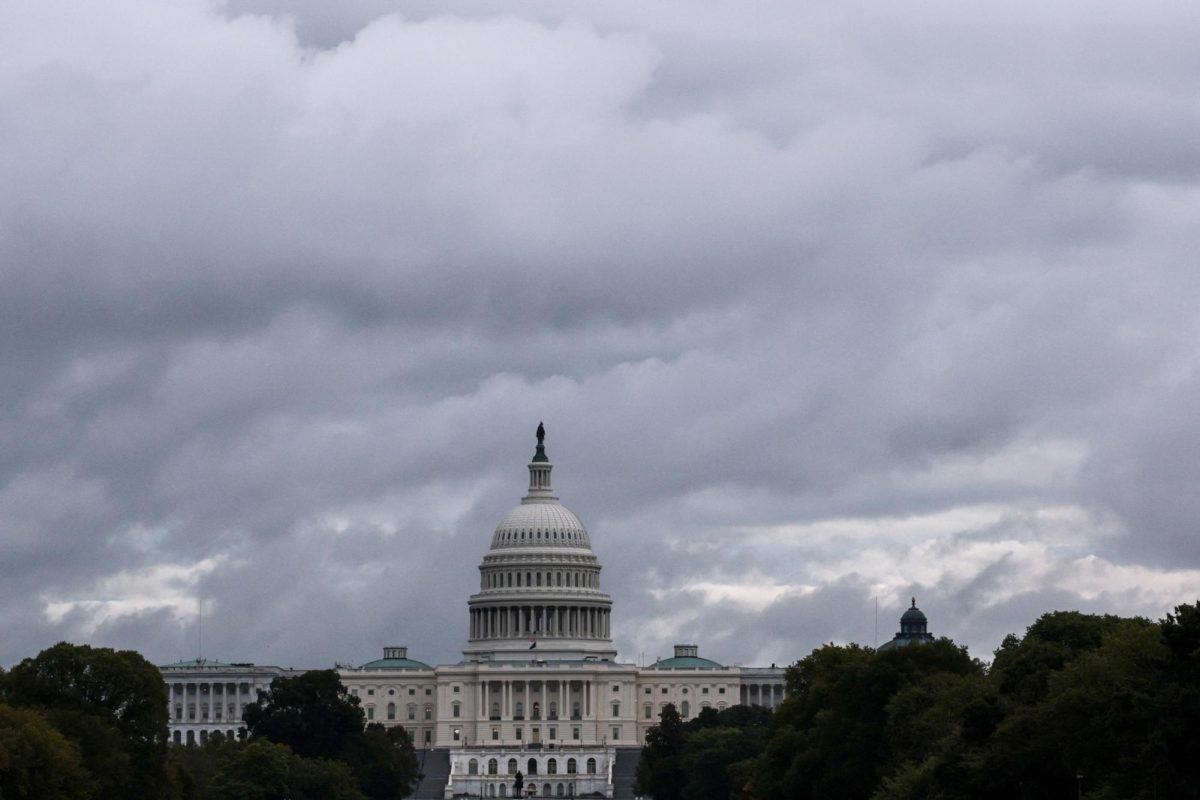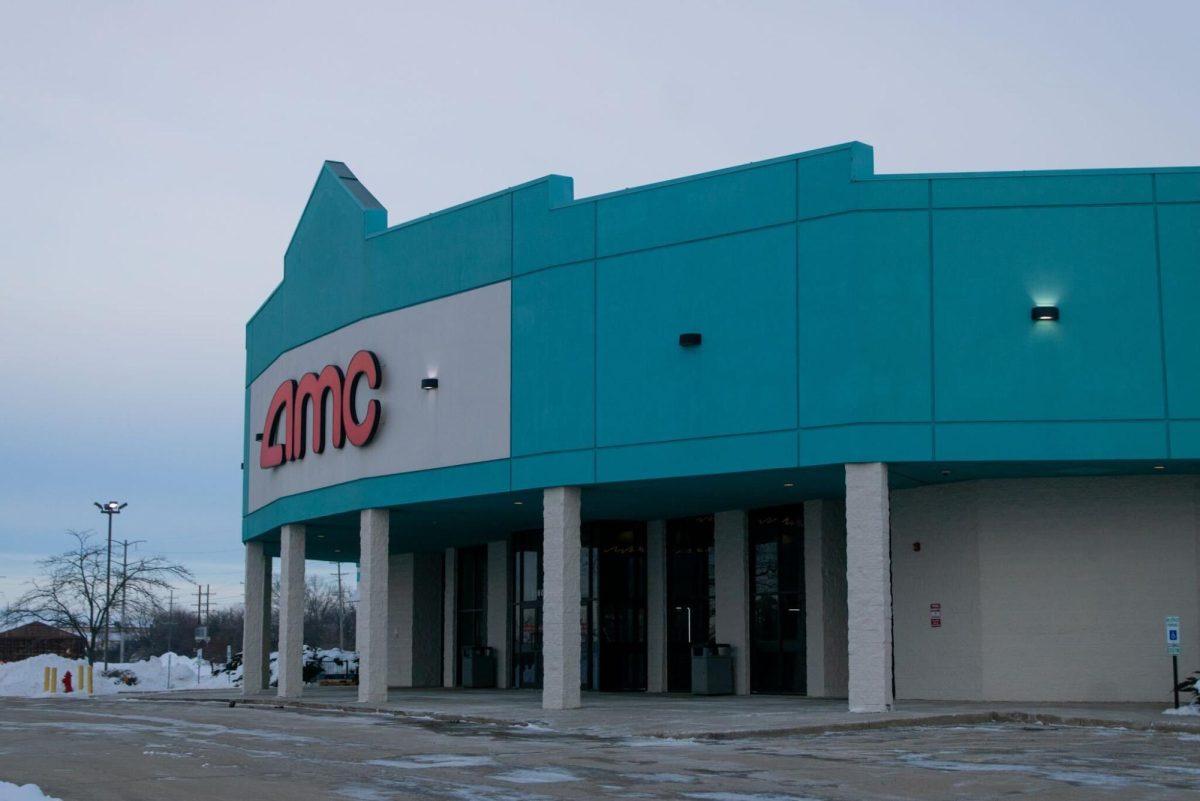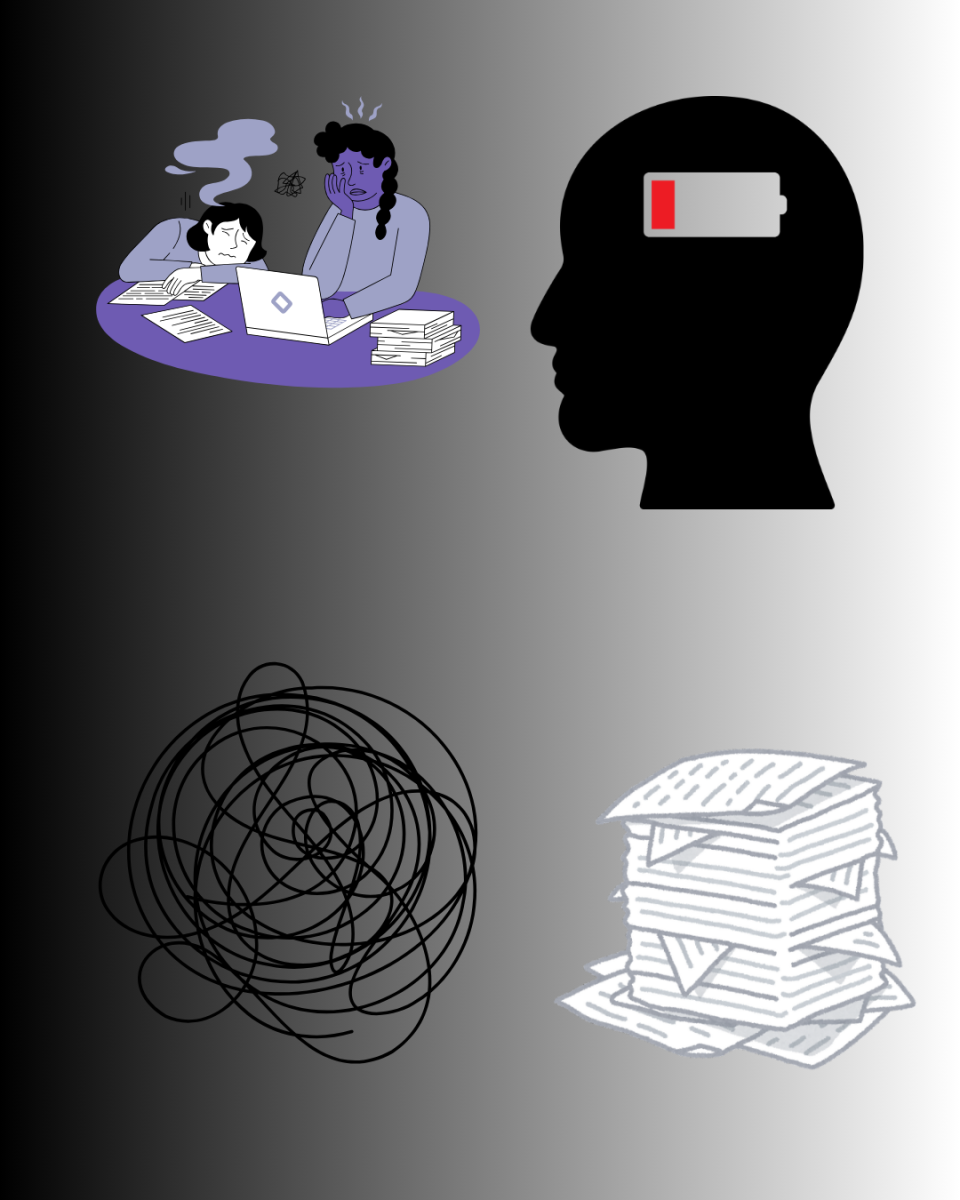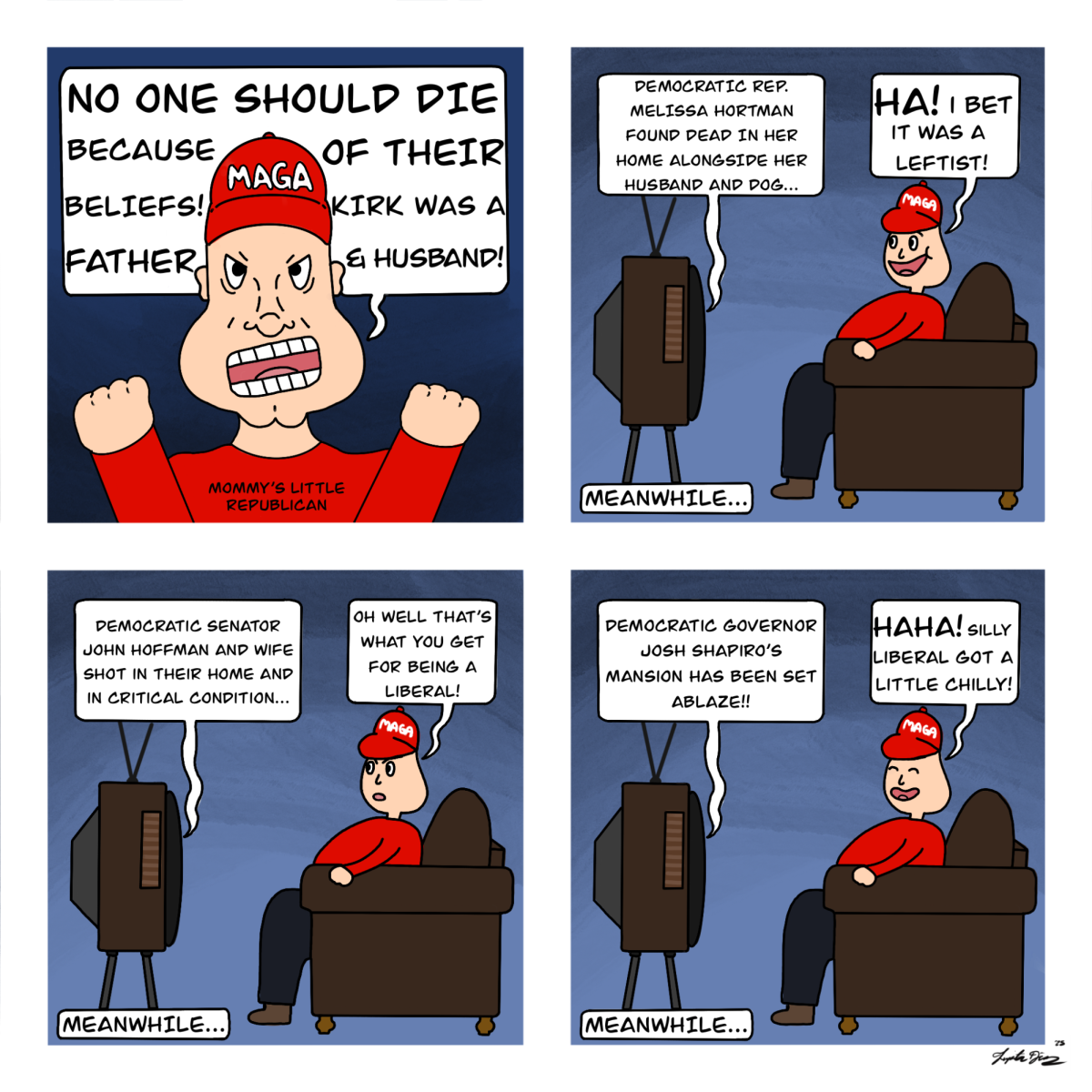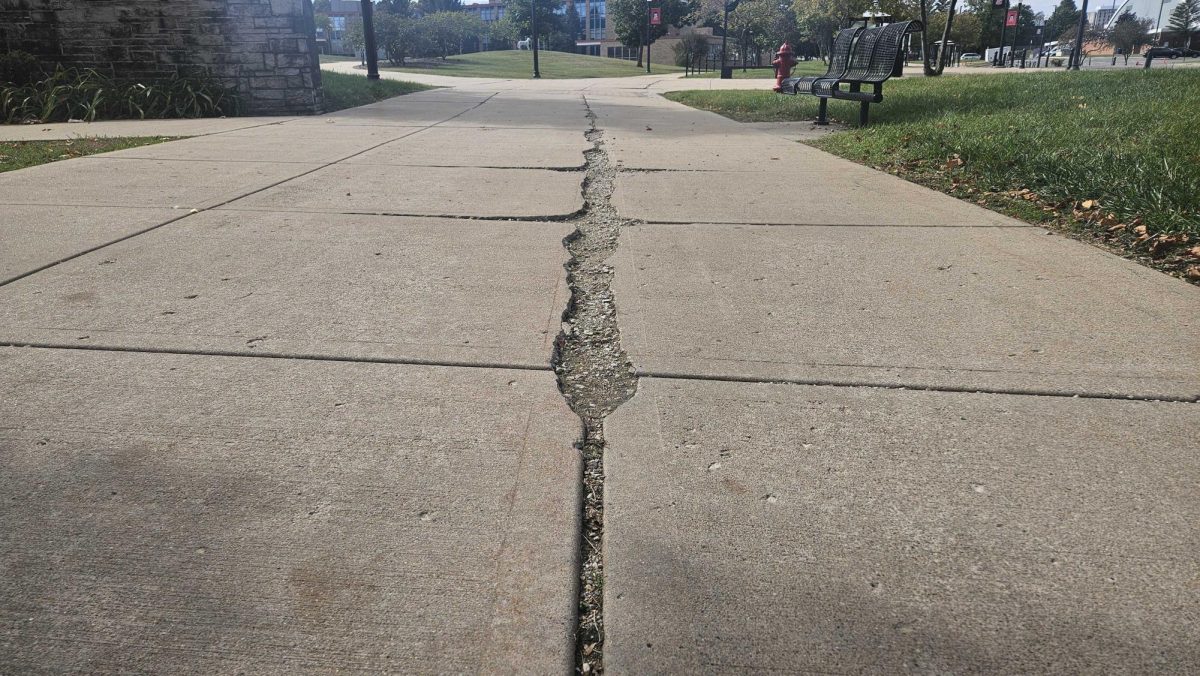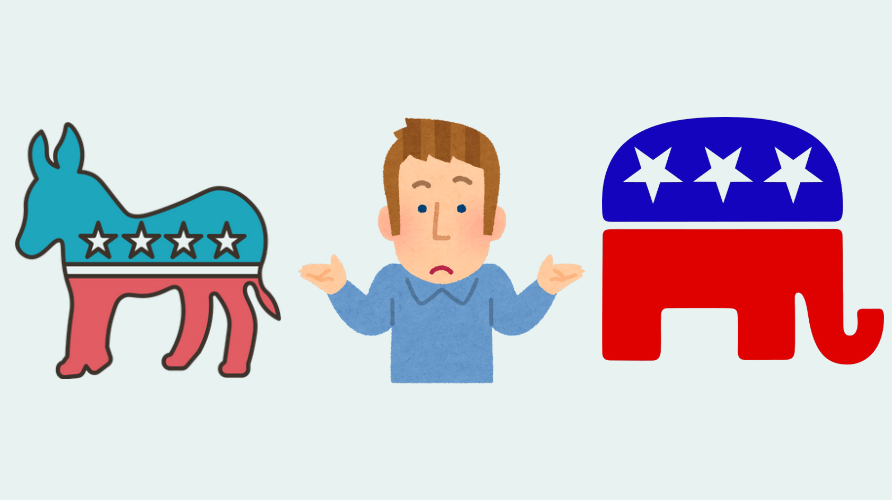The American public school system has become just as frigid as our Midwest winters. There is no room for growth, to get a better house, to go to a better school, to get a better job, to live a better life. So, in order to survive we must make do with what we are given, even if it has to be handed down.
Those of us who frequently experienced hand-me-downs from older siblings can recall the groans made when presented with our older relatives’ jeans and sneakers, offering up a complaint even if we had no choice but to wear it. We definitely didn’t want anyone to know our “new” shoes had belonged to someone else.
The difference between making a hobby of wearing thrifted clothing versus hand-me-down clothing is the idea of ability. It’s the sweatshirts and jackets your cousins just outgrew and that you can’t say no to because it’s 25 degrees outside. It’s because you haven’t had a winter coat since the fourth grade, and your mom’s paycheck is going toward keeping the heater on.
It’s no secret that the U.S. has its fair share of problems. But possibly some of the biggest problems, like affording a winter jacket, are most often faced by people of color – poor people of color. Black and Hispanic Americans to be at the top of our poverty rates since the 1970s, according the U.S Census.
One of the largest challenges this marginalized community faces in this nation is escaping the cycle of poverty that has been built around them. For many people, this never ending circle doesn’t just mean working hard to land a good job.
Survival also requires jumping over the hurdles that are left behind by remnants of state and federal sanctioned policies to keep specific communities of Americans out of certain neighborhoods and schools. It is no surprise to many people that this country has had its fair share of discriminatory policies made to keep people of color out of equal opportunities.
Of course, many of these legal forms of discrimination were eliminated, like when the Fair Housing Act of 1968 was passed. It prohibited discrimination and encouraged equal housing opportunities for people of all races, religions, national origin, sex, handicap and family status.
However, just because these laws and policies may have been absolved, does not mean their legacy doesn’t remain. In many cases, the response was just too late.
The construction of the National Housing Act back in 1934 hoped to garner some economic relief for Americans in the wake of the Great Depression. This act, as part of the New Deal, aimed to improve housing standards and conditions, provide a system of mutual mortgage insurance, and other purposes.
However, while one part of the country was recovering from the effects of the Great Depression, the same government policies specifically prohibited Black Americans from getting the same opportunities.
One such way marginalized communities were excluded was through a process known as redlining. This is when the federal government formed physically segregated neighborhoods as the Home Owners Loan Corp. created residential city maps and categorized communities by color and level of “risk” to default on loan and mortgage payments.
The lined neighborhoods are characterized by low risk to high risk, with green, blue, yellow and red lined areas. With red lines signifying hazardous influences like immigrants, lower class Americans, and of course, Black Americans, according to NPR.
Merely the presence of people of color convinced construction companies not to invest and prohibit the building of new homes in redlined communities. With no evidence or reasoning to explain why these communities were seen as a risk, public works abandoned these neighborhoods.
BUT WHAT DOES RACIST HOUSING HAVE TO DO WITH EDUCATION? ABSOLUTELY EVERYTHING.
The primary way in which the federal government gathers funding for public school districts is through collecting property taxes. Communities redlined all those years ago are lacking in homes and buildings with higher property values which allot less funding for schools in the area, resulting in lower quality facilities, less resources and poorly paid teachers.
We again must bear witness to this cycle meant to keep the poor poor, and the rich rich. Students born into low income families attend schools with lower quality education. There are no supplies to write with, no new books to study with and teachers often aren’t paid enough to spend extra time with students to make up for the disparity in education they receive.
A shortage of teachers poses new problems for these school districts as they deal with a decrease in available staff. Teachers instruct larger classes, offering very little one-on-one time for students who are struggling and ultimately get left behind.
In response to the shortage some districts have moved to hiring “lower quality” educators as well, according to the National Association of Secondary School Principals.
It has become clear the U.S. has allowed communities of people of color to become accustomed to receiving the scraps and leftovers from higher income, and often, white people.
People of color shouldn’t have to make it out of their neighborhoods to find success. If we really expect to become a nation that prides itself on the idea of equal opportunity, we have to improve our own communities. We need to move toward a goal of equity in place of moving neighborhoods, and revise the way in which schools receive their funding.
Relying on property taxes is what continues to carry wealth disparities over into education. An improvement would be a system that focuses funding on schools that serve low-income communities, to begin the transition to leveling the playing field that is the American school system.
Many states have implemented new methods of fund distribution. Utah awarded 21% more funding to schools that serve low-income students, according to the NASSP. States like Minnesota, Massachusetts and New Jersey have begun to provide additional funds to districts that have large populations of low-income students, as well as raise standards and salaries for teachers and principals.
Focusing funds into school-readiness and scholarship programs has also worked out well in these states as it increased student capability in these economically disadvantaged areas. The Learning Policy Institute has found that since implementing these kinds of changes these states have seen improvement with New Jersey’s ascent seeming even more hopeful as its population is majority fulfilled by minority groups.
If this nation seeks to undo the mistakes of the past, it needs to acknowledge the harm done by past policies. Simply apologizing and sweeping the memory of the National Housing Act under the rug does not erase the past or the problems of the present.
Relying on the notion of equality is outdated. If we want to succeed as a country we must solidify the path to mobility based on individual actions, efforts and dreams, not on the past prejudices of our government.
We need to shift our focus toward equity in the sphere of public education, by giving more to those who historically were given much less, and to make a place for ourselves outside of the redline.





